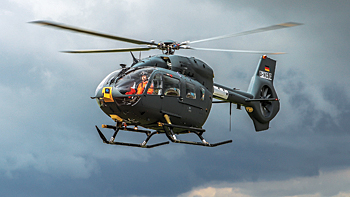INDIAN ARMED FORCES CHIEFS ON OUR RELENTLESS AND FOCUSED PUBLISHING EFFORTS

The insightful articles, inspiring narrations and analytical perspectives presented by the Editorial Team, establish an alluring connect with the reader. My compliments and best wishes to SP Guide Publications.

"Over the past 60 years, the growth of SP Guide Publications has mirrored the rising stature of Indian Navy. Its well-researched and informative magazines on Defence and Aerospace sector have served to shape an educated opinion of our military personnel, policy makers and the public alike. I wish SP's Publication team continued success, fair winds and following seas in all future endeavour!"

Since, its inception in 1964, SP Guide Publications has consistently demonstrated commitment to high-quality journalism in the aerospace and defence sectors, earning a well-deserved reputation as Asia's largest media house in this domain. I wish SP Guide Publications continued success in its pursuit of excellence.
- Indian Air Force Aims for Full Indigenous Inventory by 2047 — Air Chief Marshal A.P. Singh
- General Upendra Dwivedi takes over as the Chief of the Army Staff
- Rajnath Singh assumes charge as Defence Minister for the second consecutive term
- Admiral Dinesh K. Tripathi assumes Command of the Indian Navy as 26th Chief of the Naval Staff
- Prime Minister witnesses 'Bharat Shakti' – a Tri-Services Firing and Manoeuvre Exercise in Pokhran, Rajasthan
Asia increasingly important for light military rotorcraft manufacturers

In its latest study on the light military rotorcraft market, Forecast International projects that 1,304 light military rotorcraft will be produced from 2015 through 2024. The value of this production is estimated at $19.9 billion in constant 2015 US dollars. In general, a light military rotorcraft is defined as having a maximum gross weight of less than 6,804 kilograms.
Annual production of light military rotorcraft is projected to increase from 171 units in 2015 to 223 in 2016. However, this rise in annual build rates is expected to be only temporary, as yearly production will head downward after 2016, reaching a low of only 68 units in each of 2022 and 2023. A slight rebound, to 72 units, is projected in 2024.
Budgetary difficulties around the globe are impacting the light military rotorcraft market. Many nations have been reducing defence spending, with the result that some existing rotorcraft procurements are being stretched out or reduced in scope. At the same time, several new start acquisitions have been postponed or canceled. And, unless additional sales are secured to boost long-dwindling order books, a number of helicopters will be nearing the end of their production lives.
Over the next 10 years, our forecast indicates that Asia will grow in relative importance as a regional market for light military helicopters while the European and North American markets decline. India, Japan and South Korea are all planning significant and sizeable procurements of light helicopters, presenting quite a contrast in this regard to most nations in other parts of the world.
As for market share projections by manufacturer, Airbus Helicopters, is forecast to lead the market in unit production during the 2015-24 time period, building 337 light military helicopters over the 10-year timeframe. Bell is projected to lead in monetary value during the same period, on production worth $5.69 billion.





